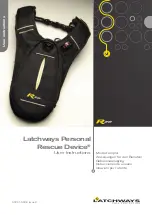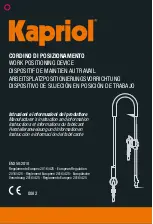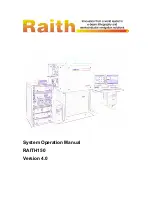
4
The attached probe moves to user-specified probing positions by one four-axis scara robot.
The robot provides 4 degrees of movement: along x-axis, y-axis, z-axis, and 360° rotation
(both clockwise and counterclockwise directions).
Probe
The probe induces an ESD disturbance to the DUT. Four different probe types are available
to inject magnetic or electric fields in directions of x, y and z movement. The commercially
available probe types are: Hz, Hx/y, Ez, and Ex/Ey.
Cameras
A high resolution USB camera is attached to the robot and used to take pictures of the DUT.
The sensitivity of the DUT to the disturbance is color coded and then superimposed on the
picture taken by the USB camera prior to the test.
Power Amplifier
A 50 dB gain power amplifier (PA) is used to increase the signal strength.
Attenuator
An attenuator is placed between RFI probe and power amplifier for better impedance match,
and to protect the PA. Attenuator ranges from 3 to 10 dB is commonly used.
Signal Generator
A signal is generated by signal generator and is injected to a DUT through RFI (ESD) probe.
The signal can be either power or frequency, or the combination of power and frequency.
Содержание api SmartScan V5.0
Страница 1: ...1 Radio Frequency Immunity Measurement Setup V 5 0 Amber Precision Instruments Inc Dec 2017 ...
Страница 6: ...6 Figure 3 Create a new workspace Figure 4 Name the workspace and save in a directory ...
Страница 7: ...7 Figure 5 Create a new RFI project Figure 6 Name the RFI project ...
Страница 13: ...13 Run measurement Click the Run button to run scanning Figure 18 Run measurement ...































